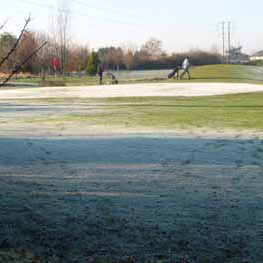In their own words: BIGGA CEO Jim Croxton
The head of the greenkeepers’ association explains how education is helping golf courses perform better during winter
A number of greenkeepers I have spoken to over the years will ruefully state that the technological advance which has had the biggest effect on them isn’t a new-fangled aeration machine or a soil moisture meter, no it is Gore-Tex! There is no doubt that, for many, golf is now a year-round sport, which simply wasn’t the case 40 years ago when I started playing.
Higher expectations, coupled with advances in clothing for adverse conditions, combine to create significant pressure in the winter months for our members. In fact very often now, golf clubs are judged on their winter condition rather than how they are presented during the season, as excellence is now expected more or less everywhere in summer.
.

This judging is key – say you’re a course manager and in certain conditions you close the course because you believe it necessary to ensure it is healthy for the coming season. However, the course down the road doesn’t, and they choose to stay open. Golfers don’t generally think six months down the line. If they pay for annual memberships, then in the UK they want to play 12 months of the year. So which club do you think they’d choose to join?
The pressure, then, is on to produce a playable course no matter the conditions, and that’s something that’s becoming increasingly difficult in our changing climate.
You may have seen the recent Game Changer document published by the Climate Coalition. While some of the claims require further investigation, the document detailed how our winters are becoming a nightmare for greenkeepers, and this year has been a prime example. The winters from 2013-14 and 2015-16 had record-breaking rainfall in many areas, with 150 per cent more than normal, and six of the seven wettest years in recorded history have occurred since 2000.

Wetter and milder winters mean softer surfaces, more pitch marks, more turf disease pressure and increased recovery time as the season gets underway. Not to mention damage due to heavy traffic in wet areas.
These cause pressures on greenkeepers that I have discussed in the past and which can only be allayed by golfers and senior management at golf clubs understanding how changing climate impacts things out on the course. As with King Canute attempting to turn back the tide, generally nature has its way.
What we need to do is prepare and educate ourselves as best as we are able. That’s why events such as the BIGGA Turf Management Exhibition (BTME), which BIGGA hosts, and the associated Continue to Learn education programme is so important.

If your greenkeeping team attended Continue to Learn, they will have experienced world-class education and have been brought up to date with all the latest innovations in the industry. They’ll have also gained a greater understanding of how the pressures they face are shared across the wider industry.
Whether the team attend education seminars or not, I would urge you to take a look at the bigger picture. Don’t judge them on how the greens look today. Instead, reserve judgement for the course they produce all year round, and engage in conversation about any help and support they may require.
To find out more about the work BIGGA provides, visit www.bigga.org.uk















Let me tell You a sad story ! There are no comments yet, but You can be first one to comment this article.
Write a comment